

LG Williams shared their story and experiences with us recently and you can find our conversation below.
LG, so good to connect and we’re excited to share your story and insights with our audience. There’s a ton to learn from your story, but let’s start with a warm up before we get into the heart of the interview. What are you most proud of building — that nobody sees?
Between 2023 and 2025, I conducted a transcontinental, self-directed conceptual artist residency spanning twelve ultra-luxury sites — including The Brando in Tahiti, Le Royal Monceau Raffles in Paris, and Cottar’s Safari Camp in Kenya. The objective was the quiet construction of the Invisible 21st Century Monument to Artistic Futility™ — a work so imaginatively and conceptually pure that it refuses all conditions of visibility, verification, or value.
Each location functioned as a disciplinary chamber. My daily regimen included Tantric Yoga, Ice Immersion, Simulated Organ Transplants, Bio-Hacking, Isolation Rooms, Micro-Dosing, Ketamine Profusion Therapy, Nutrient-Infused Blood Transfusions, and High-Frequency Massage Treatments — all designed to accelerate creative depletion. No materials, no audience, no production. Just a slow-burning, unraveling, and unpacking of art’s metaphysical assumptions.
Where Wally Hedrick, no, sorry, Ad Reinhardt sought Art-as-Art, I pursued Art-as-Expenditure — a praxis that metabolizes and ignites cultural capital to void out authorship itself. Assisting this effort is a rotating team of Ivy League–credentialed drugged-out, drop-out, nepo-babies, discreetly mining Bitcoin in thonged bikinis from a converted spa facility while coding ephemeral blockchain-based artworks that disappear upon confirmation. Each extraterrestrial intervention self-deletes into another aura — not unlike my 2000 piece, Artistic Endeavor Trashed!, which anticipated this ambient vanishing long before the blockchain could simulate entropy.
The monument has never been shown or verified. It lives in non-extant catalogs, encrypted spa menus, and a members-only OnlyFans™ archive, accessible only through guided non-participation. And yet, all associated documents can be examined and acquired via my internationally renowned gallerist, Erik David of Erik David Gallery, Beverly Hills — including prints and pre-collapse promotional ephemera derived from For Sale By Artist (2011–13).
This project also continues through adjacent inquiries: the aesthetics of war, the neurochemical fatigue of AI labor, crypto-rituals of decentralized authorship, and the architectural psychosis of planetary collapse — as previewed in another early work, $0.00 or Bankrupt (2000), which now serves as both prophecy and punchline.
What I’m most proud of building is a structure whose absence sustains its power and elegance.
Can you briefly introduce yourself and share what makes you or your brand unique?
I serve as the CEO of The Estate of LG Williams™ Inc., a research-driven art meta-enterprise that conducts a sustained, yet comprehensive, analysis of cultural, political, financial, technological, and epistemological breakdowns. While this aesthetic and commercial initiative adopts the outward form of an artistic practice — exhibitions, lectures, residencies, unpaid internships, luxury environments — its deeper function is to map the interlocking crises that have rendered traditional categories of art, truth, and value increasingly ceremonial. The art isn’t the output — the dysfunction is.
In parallel, I serve as a consultant to select Fortune 500 companies and members of the so-called Magnificent 7 tech firms, offering strategic art advisory services in metaphysical aesthetics and cognitive dissonance calibration across Los Angeles, Silicon Valley, and Doha. These engagements are less about brand elevation than about synthetic cognition management — where financialized aesthetics and semiotic liquidity are retooled for competitive advantage, dark money channeling, exhaustive white-collar criminal lobbying, and monopoly retention. In these circles, Art Lovers & Sports Fans (2004) functions not as a painting but as a PowerPoint presentation.
The project began as an inquiry into meaning and complicity within the art world, but has since evolved into a living index of systemic entropy: the collapse of governance into spectacle, the liquefaction of the public commons into blood-and-soul-sucking leverage, the transformation of scholarship into entertainment content, and the mutation of meaningless stimuli into capital velocity. We study, absorb, and replicate these phenomena, not to intervene or resolve them, but to perform their choreography from deep within the collapsing epistemic infrastructure — as early works like The Forever Art Professors (2014) anticipated with cartoonish precision.
My Estate does not seek to critique the world so much as to inhabit and transcend its logic more thoroughly than it can tolerate. It is an immersive apparatus calibrated to metabolize corrupted institutions, displaced democratic norms, distorted realities, and digital systems that accelerate failure under the guise of innovation. It poses as a solution while remaining part of the problem — a strategic sincerity engine engineered to collapse in plain sight.
Our interest lies not in “artworks,” but in conditions of ultra-knowing — environments where language explodes, systems invert, and perception becomes indistinguishable from sexual performance. For the latter, we’ve even created, manufactured, and distributed our own organic baby oil — an homage, perhaps, to the sensual brutality embedded in ME (2015), which offered a full-body lube of the late capitalist psyche. Here, the artist no longer functions as visionary, but as symptom: not above the fray, but submerged in its arcane and pagan rituals, lubricated and complicit, whispering to the abyss in 4K.
Great, so let’s dive into your journey a bit more. What’s a moment that really shaped how you see the world?
I grew up in a part of the Ozarks that had already collapsed by the time I arrived — not in ruins exactly, but through neglect, inbreeding, the Klan, dire poverty, and simulation. Roads led nowhere. Jobs were rumors. Schools rehearsed something once called education, but no one could quite remember the script. The destitution was structural, but the real deficit was epistemological: no one believed in what they were faithfully performing, and yet the performance continued — like THE SILENCE OF LG WILLIAMS IS UNDERESTIMATED (2025) playing on a broken loop in a church basement with no congregation.
There was a moment — small and unphotographed — in a sixth-grade classroom with no windows and a broken thermostat. The teacher gave us a used coloring book. One of the images was the Statue of Freedom — a classical, bosomed female figure with long, flowing hair, except she was missing her head and helmet, which supposedly had a crest composed of an eagle’s head and feathers. I asked what the headless apparition meant. She paused, smiled, said, “It’s something we’re lucky to have,” closed the book, and handed it to me. That moment — almost imperceptible — marked the beginning of an entirely different curriculum. In that room, language failed gracefully and repeatedly — much like Classroom Miracle (2005), which understood pedagogy as a form of performance art and ignorance as a national inheritance.
She and I developed a quiet intimacy that blurred pedagogical lines. It wasn’t inappropriate so much as inevitable, like the merging of two failed categories. In that room, knowledge wasn’t transferred — it was bare naked and collapsed. Education became debauched choreography. Language became expletives and unconditional protocols. The spelling list became an index of ceremony, euphemism, surveillance, and obedience. I didn’t rebel. I recorded. I understood that meaning wasn’t discovered — it was administered. And often, by those with no clear grasp of its implications.
Later, I would see that the classroom was a prototype. Not a failure of the system, but its early articulation: where governance slides into spectacle, where elites stage-manage decline for personal advantage, where facts behave like performance props, and where technology speeds everything up just enough to avoid detection. The world wasn’t breaking down — it was running exactly as designed: to fuck all, well past its expiration date. Democracy, truth, knowledge, even art — none of it failed all at once. After all, our culture has been the least innovative in the arts for 500 years. That doesn’t have to be a bad thing. As The Book Of…[Your Name Here] proposes, perhaps all we ever inherited was a cover page and a spiral binding. The contemporary con simply began appearing more and more like itself, until it collapsed under the weight of its own simulation.
After I made my first millions, these questions didn’t disappear. They intensified. Wealth didn’t deliver answers — it offered backdoor access to a system in irreversible decay. What shaped me wasn’t a single moment, but the realization that the moment had already been staged. And that’s all we’re left with now is performance, dressed as meaning.
If you could say one kind thing to your younger self, what would it be?
If I could say one kind thing to my younger self, it would be: Don’t worry — you’re not crazy. The culture is. In other words, it’s not the rats, it’s the cage.
You’re not imagining it — there is something deeply hollow beneath the pantomime of structure, something anxious behind the mask of authority, something performative about every institution pretending to educate, govern, heal, or critique. One day you’ll discover that the economy is less an engine of value than an exquisitely calibrated hoax for transferring risk upward; that billionaires don’t avoid taxes out of ideology but out of regulations; that corruption isn’t an aberration but the medium itself. Art Lovers & Sports Fans (2004) captured this phenomenon long before it became fashionable — an art world that was confused with entertainment, both operating as closed-loop feedback systems. You’ll see that the regulatory bodies overseeing the art and crypto markets are often the same ones being silently bankrolled by them; that “checks and balances” now mostly refer to the plebs and offshore accounts; that housing is not for humans, but for portfolios; that American governance has become a form of weather — erratic, ambient, no longer designed for existence or responsiveness, only spectacle.
You’ll see that the Supreme Court has become a Constitutional cosplay troupe. That art museums serve wealth with the same antiseptic reverence as tax havens. Art education doesn’t train thinking, but rather perfects the user interface of alibis, excuses, and compliance. That “truth” is now a derivative product — bundled, hedged, circulated algorithmically across decaying media infrastructures until even the lies collapse into half-digested data rot. Appear Like Me (2025) didn’t just allude to the decay of aura — it announced its corporate restructuring. You’ll learn that democracy hasn’t been overthrown — it’s been quietly rebranded as a content vertical.
You’ll learn that simulation replaced reality not through rupture, but through subtle upgrades — one UX refresh at a time. That culture now functions as plausible deniability for collapse. That academia’s output has been outsourced to ghostwritten paper mills. That political parties are mostly content farms with PR wings. That freedom has been A/B tested into oblivion. And still, they’ll ask artists to create “work,” as if that word still holds meaning, as if For Sale By Artist (2011–13) wasn’t already the final word on the transactional hollowing of creativity.
So the kindest thing I could say is this: You’re right to be confused. That confusion is evidence of contact. Stay with it. Don’t resolve it. Don’t turn it into a career strategy. Just study it, metabolize it, learn to mimic its faux rituals until you disappear inside them. That’s where the real work begins. Because in the end, your public persona won’t be a mask. It’ll be the only artifact left that still knows how to live beautifully.
So a lot of these questions go deep, but if you are open to it, we’ve got a few more questions that we’d love to get your take on. Is the public version of you the real you?
The public version of me is the only one permitted to circulate, so it must be the real me — at least in the way reality now functions: as interface, as spectacle, as strategy. Privacy has become obsolete as a category; interiority is an unverifiable claim. The public self is no longer a projection of the private one, but its replacement — a curated hallucination made necessary by the collapse of institutional coherence, epistemic legitimacy, and the social contract formerly known as truth. That truth now functions more like an auction — as in Bottom Line (2013) — where meaning is allocated not by deliberation, but by proximity to financial leverage and institutional convenience.
But the distinction between “real” and “performed” presumes a world still tethered to some ontological center. That center collapsed years ago. Art galleries and institutions have surrendered to banality, laundering ideology through their own press releases and footnotes. Truth is traded at market prices, click-throughs define legitimacy, and GPT-generated jargon fills out grant applications for projects that never existed. Think tanks issue hallucinated reports about hallucinated wars; foundations fund “meaning impact accelerators” with ESG-compliant branding. No one believes, but everyone performs. It’s not hypocrisy. It’s protocol.
And still, I’m asked to “be myself.” Myself? I’m a liquidity pool for intellectual disaffection. I consult for governments on how to appear ethical while accelerating collapse. I help corporations soothe their algorithmic dread — the terror that even their own AI no longer obeys. I make art, apparently, though the works are less artifacts than derivatives — hedges against epistemic bankruptcy. Blood, Torture, Death, And Horror (2024) was never about faith — it was about protocols of forgetting, and forgetting why forgetting mattered. You can buy the work, yes. You can insure it. But you can’t “understand” it any more than you can decode the phantom infrastructure of DAOs underwriting a weekend rental in the metaverse.
And somewhere beneath it all, yes — I’m accumulating crypto-riches at the precise moment before the inevitable implosion reconfigures what’s left of the global economy. Not because I believe in techno-soteriology, but because every other system — judicial, educational, aesthetic — has already defaulted. Wealth, now, is a measure not of value, but of how well you’ve gamed collapse. Even I am tokenized. I am a self-liquidating governance node posing as a person. And the art? It’s just the alibi. X-Box (2012) tried to warn you — that the apparatus of play, surveillance, violence, and aesthetics would one day converge inside a single black cube and call itself culture. The only question now is who gets to hold the controller — and for how long — before the power goes out entirely.
Okay, we’ve made it essentially to the end. One last question before you go. Are you doing what you were born to do—or what you were told to do?
Yes. No. Both. Neither. The real question is: Who told me what to do — and when did they stop pretending it mattered?
Because whatever I was “born” to do has been so thoroughly abstracted, rebranded, and monetized that the origin no longer exists. Was I born to make art, or to simulate the making of it inside an economy that has algorithmically severed aesthetics from value? Was I told to critique power, or to perform critique in a format that power finds legible, decorative, even collectible? Did I choose this, or was the illusion of choice just the final product line in a collapsing artistic epistemology? Artistic Endeavor Trashed! (2000) wasn’t merely a declaration — it functioned as a manual. A sacrificial gesture. A performance of erasure that proved more consequential than creation ever could.
There is no legacy. Only metadata. The archive is corrupt. Meaning is assigned, not earned. The artist’s biography has become a permission structure for institutional programming, while the “work” serves as an interface for the self-replication of elite capital. The distinction between doing and being told has collapsed into something more total — an ambient compliance delivered through UX design, CV formatting, press releases, customer engagement, curatorial practices, and the subtle tyranny of relevance. Help Wanted (2004) forecasted this: an artist seeking employment from the very system he was indicting, a false plea to a false public for a role that could never be fulfilled — except through irony and absorption.
Yes, I run a major corporation with hundreds of struggling, unfulfilled, miserable employees — just like every other jet-setting Davos-infused CEO. Yes, I perform wellness rituals. Yes, I stage exhibitions under a name that is legally dead. Yes, I consult with the most powerful companies on Earth while posing as a malnourished aesthetic monk. Yes, I publish unreadable essays in anti-peer-reviewed journals that no longer undergo peer review and barely qualify as legitimate journals. SOLD (2025) makes this explicit: the authored self now functions more like a platform or plug-in — a content architecture ready to be branded, scaled, and monetized across collapsing domains.
However, none of these answers the question — they merely fulfill their performance requirements.
Some bigshot, I forgot their name, warned us about this — about entertainment becoming epistemology. Somebody else warned us, too, though few survived the footnotes. And another told us the identity program was over, but no one could afford to listen. The enlightenment project now comes bundled with biometric tracking and a terms-of-service waiver. “Doing what you love” is just the final user fantasy before monetization begins.
So, to answer your question: I am doing exactly what I was told to do. And I am also doing what I was born to do. Because in this system, they’ve become the same thing.
And knowing that is what allows the performance to continue — beautifully, lucratively, and, now with the advent of LG’s AGI Portal (a proprietary artificial-intelligence interface for posthuman aesthetics), forever.
Contact Info:
- Website: https://lgwilliams.com
- Instagram: https://instagram.com/lgwilliams
- Linkedin: https://www.linkedin.com/in/lgwilliams/
- Twitter: https://twitter.com/lgwilliams
- Facebook: https://www.facebook.com/lgwilliams3
- Yelp: https://www.yelp.com/biz/lg-williams-los-angeles
- Youtube: https://www.youtube.com/channel/UC29DoDr5ufnqudwNZC5ketQ
- Other: https://lgwilliams.substack.com
https://lgwilliamsart.square.site
https://www.artforum.com/events/lg-williams-estate-of-lg-williams-191322/
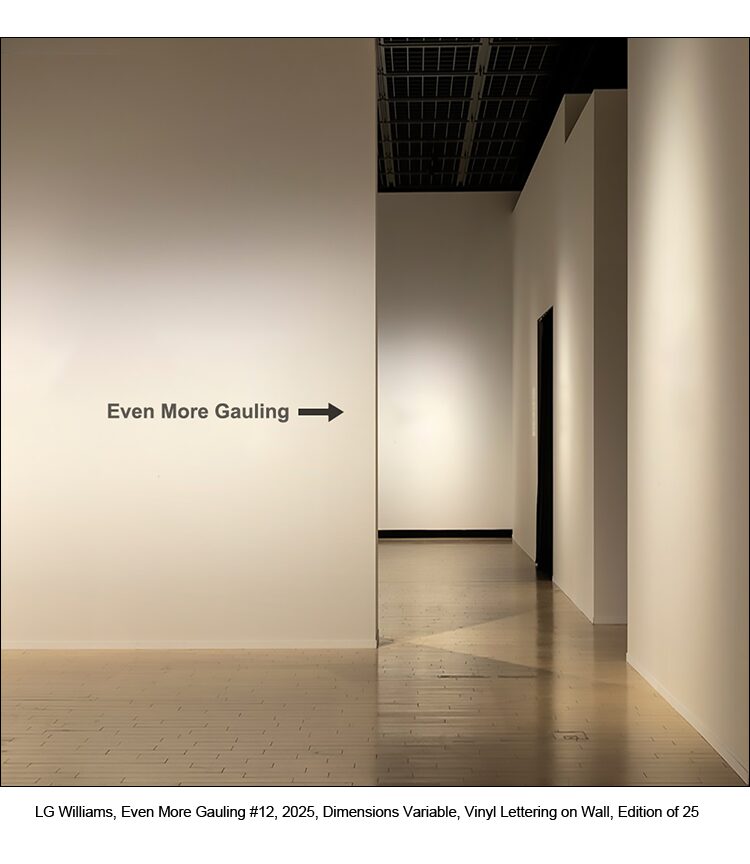


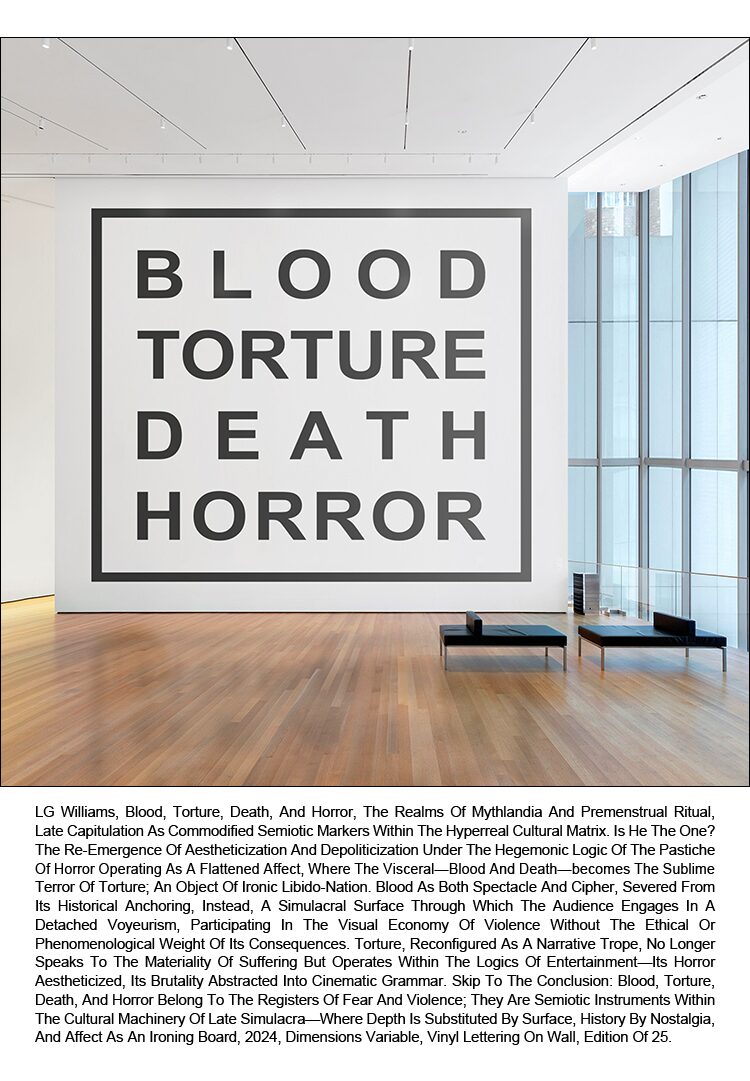

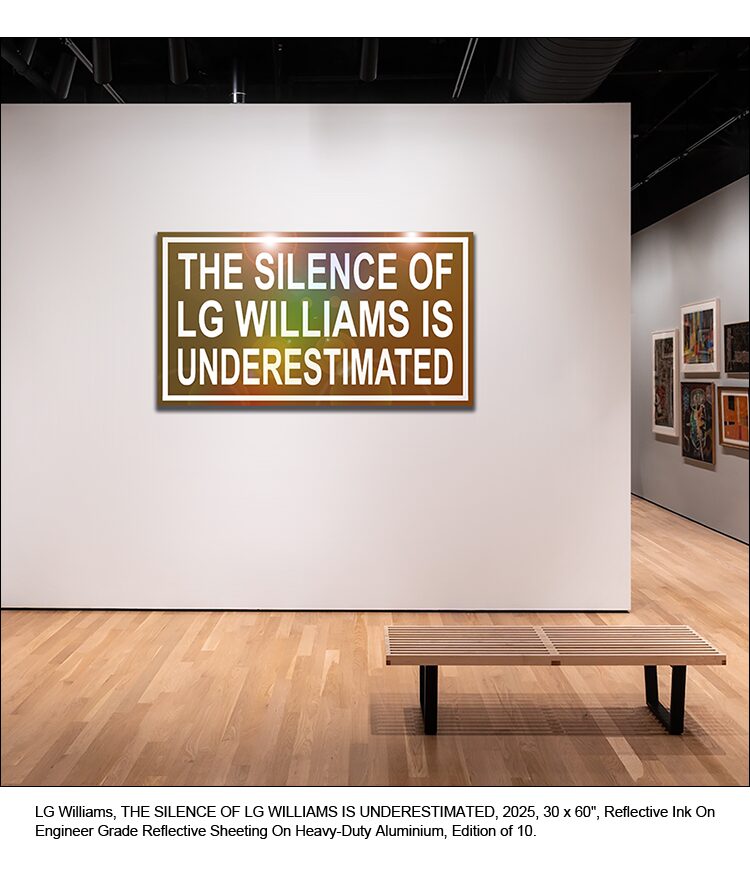
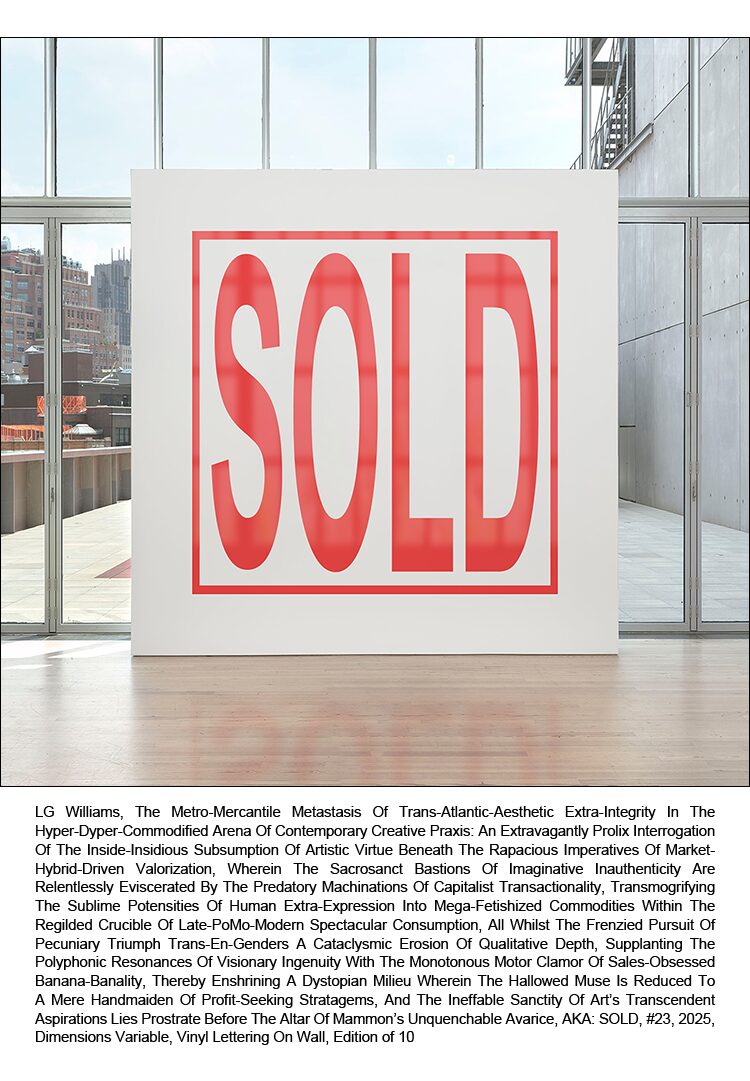

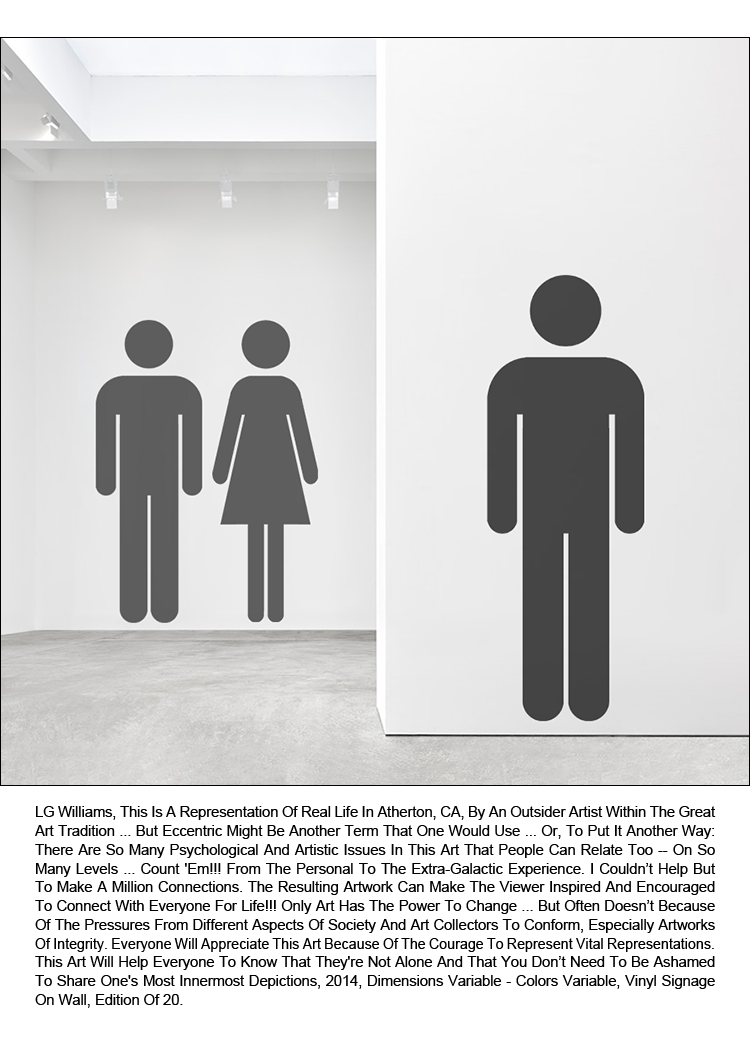
Image Credits
Text and Image Copyright © 1969-2025 LG Williams and The Estate of LG Williams™ / www.lgwilliams.com
All Rights Reserved.














